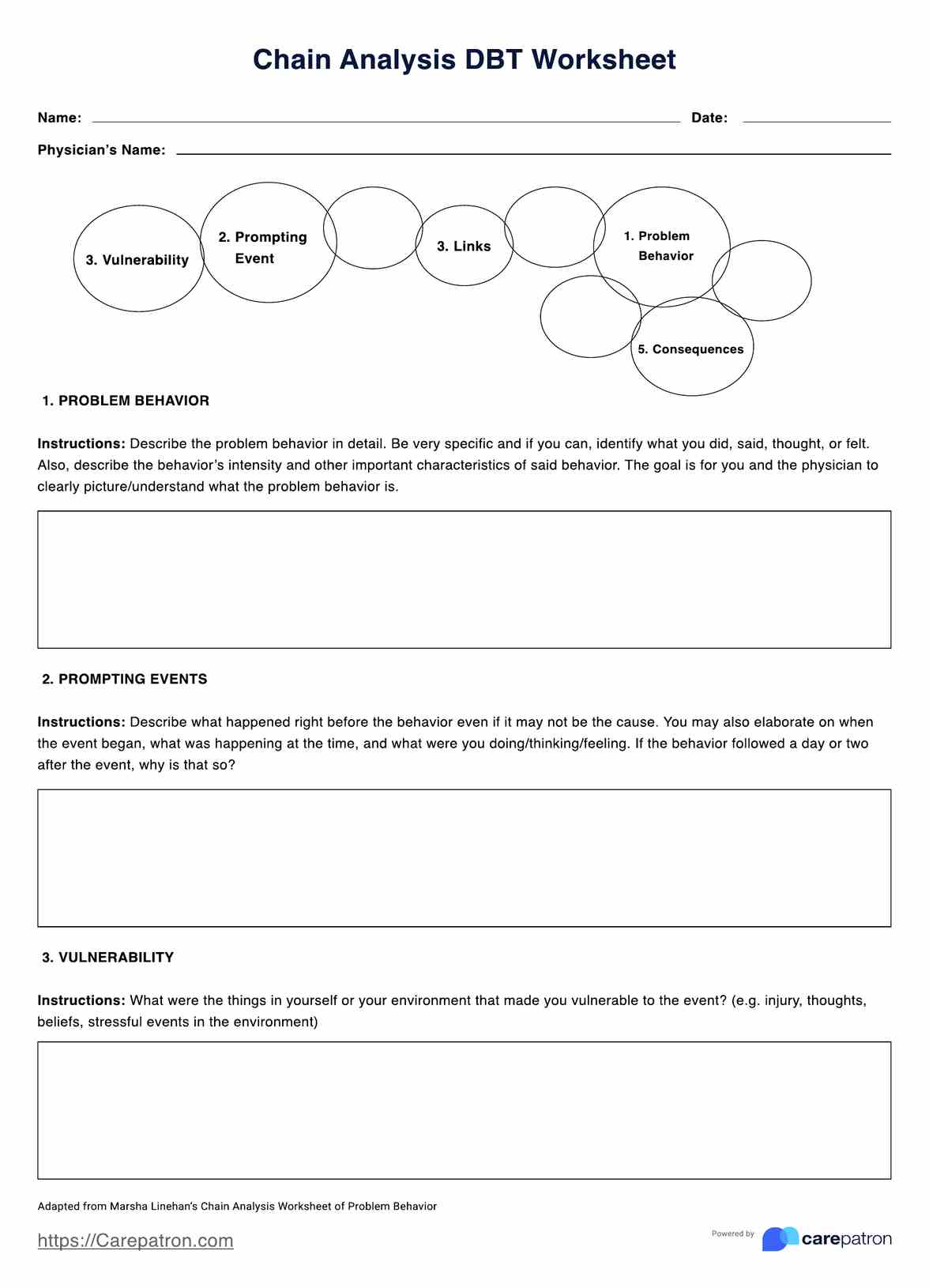Psychiatrist Marsha Linehan, who is also the inventor of DBT, is the creator of the chain analysis technique one can use during DBT.

Chain Analysis DBT Worksheets
Uncover valuable emotional insights with our effective chain analysis worksheet tool. Utilizing DBT techniques, you can dive into your emotional reactions and work towards a healthier state of mind.
Chain Analysis DBT Worksheets Template
Commonly asked questions
Interpretation will vary depending on the behavior and all the factors that affect it. It’s best that a patient consults with a practitioner before reaching any conclusions or moving forward with any self-help strategy.
It aids a practitioner conducting dialectical behavioral therapy by being both a guide during sessions and a resource for future sessions and interventions. It benefits mental health, and improves client state of well-being through helping the individual accept their mental state.
EHR and practice management software
Get started for free
*No credit card required
Free
$0/usd
Unlimited clients
Telehealth
1GB of storage
Client portal text
Automated billing and online payments











